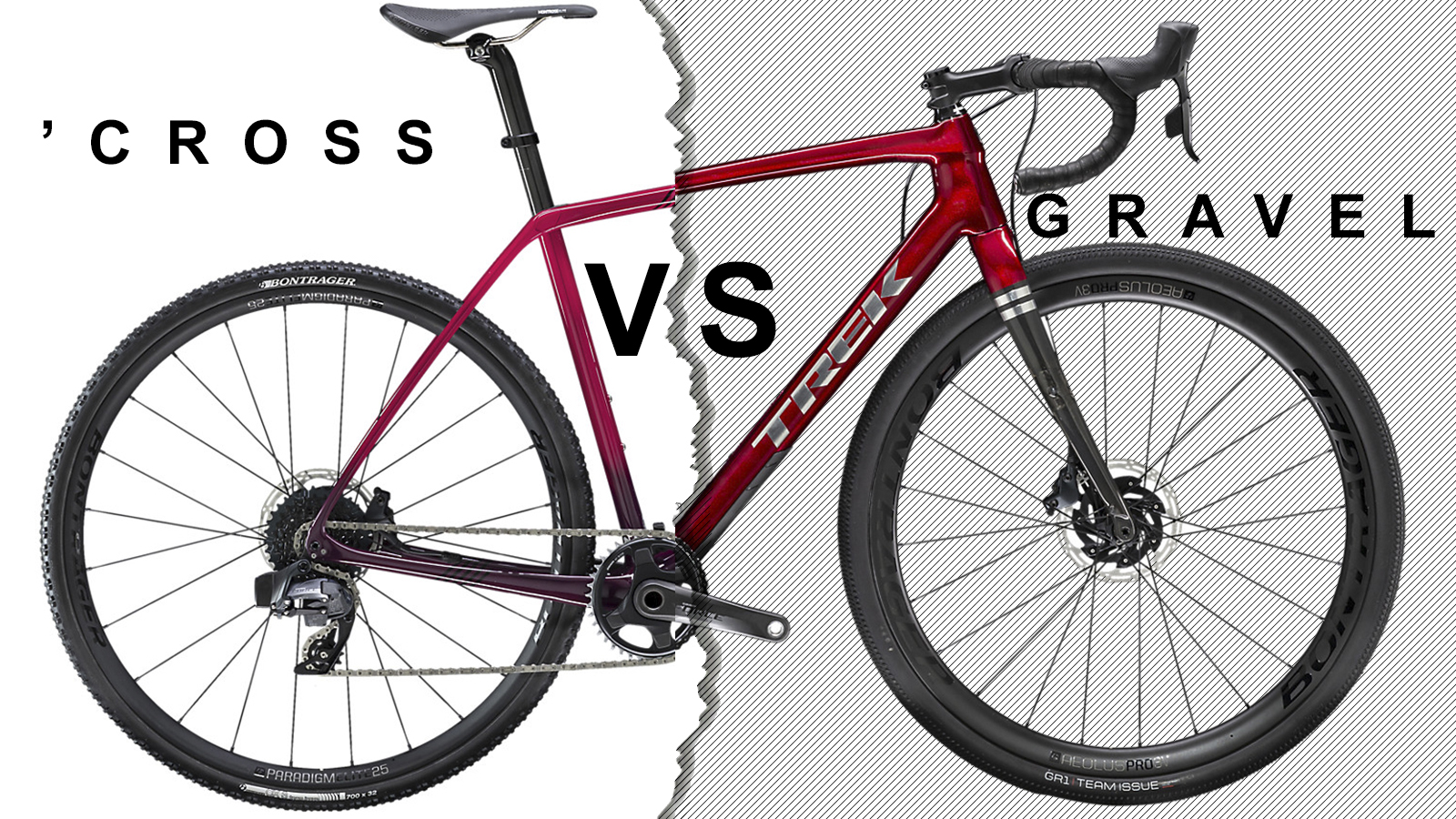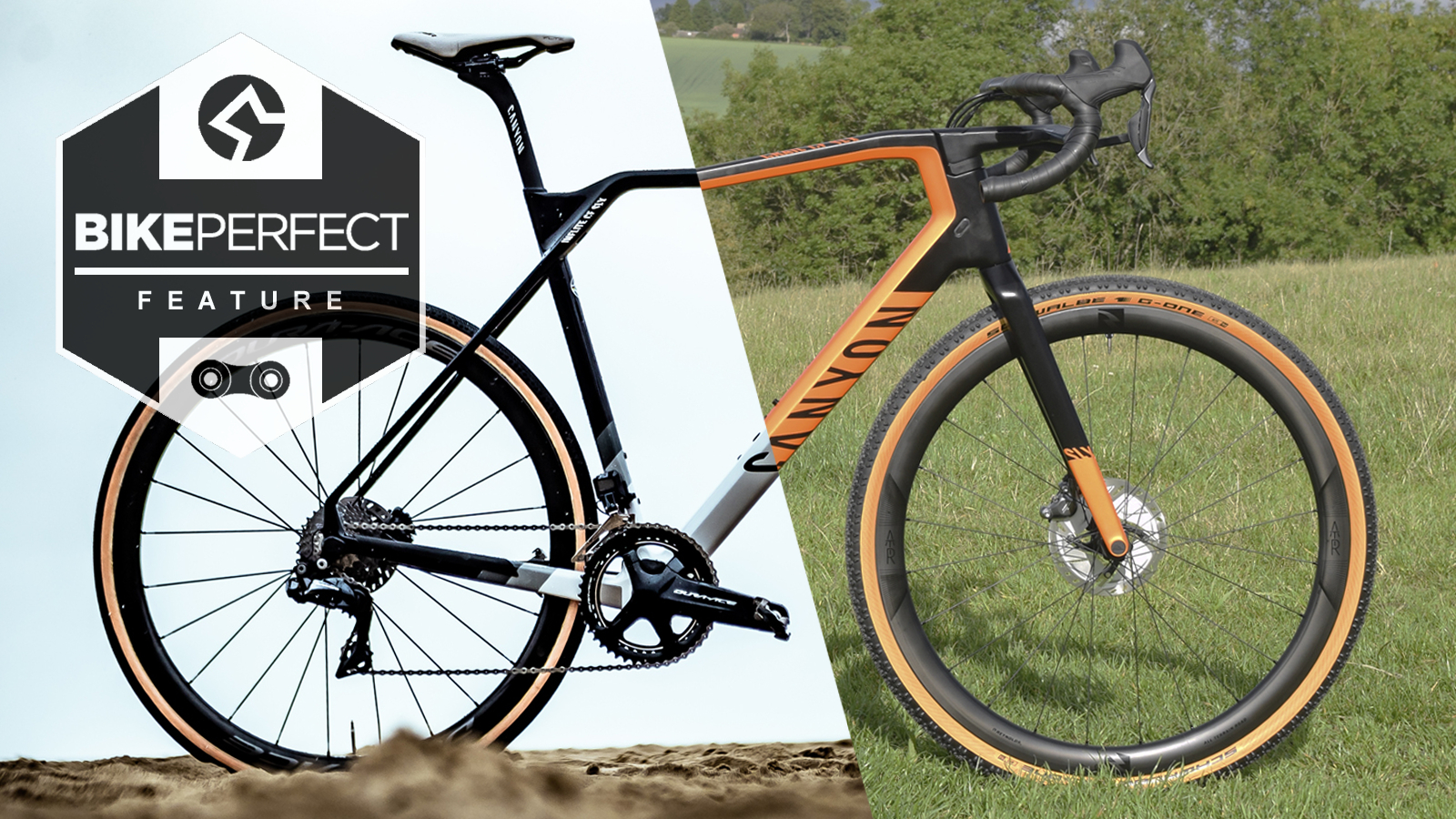Gravel bike vs cx bike – Gravel bikes and cyclocross bikes are two popular choices for riders who want to explore off-road trails and paved roads. But what are the key differences between these two types of bikes, and which one is right for you? Let’s take a closer look.
Definition and Overview
Gravel bikes and cyclocross bikes are both designed for off-road riding, but they have different strengths and weaknesses. Gravel bikes are more stable and comfortable on long rides, while cyclocross bikes are more agile and better suited for racing.
The main difference between the two types of bikes is their frame geometry. Gravel bikes have a longer wheelbase and a slacker head angle than cyclocross bikes, which makes them more stable at high speeds. Cyclocross bikes, on the other hand, have a shorter wheelbase and a steeper head angle, which makes them more maneuverable in tight corners.
Another key difference between gravel bikes and cyclocross bikes is their tire size. Gravel bikes typically have wider tires than cyclocross bikes, which provides more grip and stability on rough terrain. Cyclocross bikes, on the other hand, have narrower tires that are faster on smooth surfaces.
Finally, gravel bikes and cyclocross bikes have different gearing. Gravel bikes typically have a wider range of gears than cyclocross bikes, which makes them better suited for climbing hills. Cyclocross bikes, on the other hand, have a narrower range of gears that are optimized for racing.
Table of Key Characteristics, Gravel bike vs cx bike
| Feature | Gravel Bike | Cyclocross Bike ||—|—|—|| Frame Geometry | Longer wheelbase, slacker head angle | Shorter wheelbase, steeper head angle || Tire Size | Wider tires | Narrower tires || Gearing | Wider range of gears | Narrower range of gears |
Intended Use
Gravel bikes and cyclocross bikes are both designed for off-road riding, but they have different primary purposes and are optimized for different types of terrain and riding conditions.
Gravel bikes are designed for long-distance riding on unpaved roads and trails. They typically have a more relaxed geometry than cyclocross bikes, with a longer wheelbase and taller head tube. This provides a more comfortable riding position for long days in the saddle.
Gravel bikes also have wider tires than cyclocross bikes, which provides more stability and grip on loose surfaces.
Cyclocross Bikes
Cyclocross bikes, on the other hand, are designed for racing over short, technical courses that include obstacles such as mud, sand, and barriers. They have a more aggressive geometry than gravel bikes, with a shorter wheelbase and lower head tube.
This provides a more nimble and responsive ride, which is important for navigating obstacles and accelerating out of corners.
Discover more by delving into electric bike rentals north myrtle beach further.
Cyclocross bikes also have narrower tires than gravel bikes, which reduces rolling resistance and makes them faster on hard-packed surfaces.
Terrain Capabilities
Gravel bikes and cyclocross bikes both excel on rough terrain, but their specific capabilities vary. Gravel bikes are designed for long-distance rides on mixed surfaces, including gravel, dirt, and paved roads. They typically have wider tires and more relaxed geometry than cyclocross bikes, providing increased stability and comfort on rough terrain.
Gravel Roads
Gravel bikes are particularly well-suited for riding on gravel roads. Their wider tires provide more grip and stability on loose surfaces, allowing riders to maintain control and speed. The relaxed geometry also helps to absorb bumps and vibrations, reducing fatigue over long distances.
Dirt Trails
Both gravel bikes and cyclocross bikes can handle dirt trails, but cyclocross bikes may have a slight advantage due to their more aggressive geometry. The shorter wheelbase and steeper head angle of cyclocross bikes make them more agile and responsive on technical trails.
However, gravel bikes can still perform well on dirt trails, especially if they are equipped with wider tires.
Paved Roads
Gravel bikes and cyclocross bikes can both be ridden on paved roads, but gravel bikes are generally more comfortable and efficient on long stretches of pavement. Their wider tires provide more cushioning and reduce rolling resistance, making them a good choice for commuting or touring.
Cyclocross bikes, with their narrower tires and more aggressive geometry, are better suited for short, fast rides on paved roads.
Handling and Stability
The geometry and wheelbase of a bike significantly impact its handling and stability. Gravel bikes typically have a longer wheelbase than cyclocross bikes, which provides greater stability at higher speeds and on rough terrain. However, a longer wheelbase can make the bike less maneuverable in tight spaces.
Cyclocross bikes, on the other hand, have a shorter wheelbase, which makes them more agile and easier to handle in tight corners and technical sections. However, a shorter wheelbase can make the bike less stable at higher speeds and on rough terrain.
Geometry
The geometry of a bike refers to the angles and measurements of its frame. Gravel bikes typically have a more relaxed geometry than cyclocross bikes, with a slacker head angle and a longer top tube. This geometry provides a more comfortable and upright riding position, which is better suited for long rides on rough terrain.
Cyclocross bikes, on the other hand, have a more aggressive geometry, with a steeper head angle and a shorter top tube. This geometry provides a more efficient and aerodynamic riding position, which is better suited for racing.
Wheelbase
The wheelbase of a bike is the distance between the front and rear axles. Gravel bikes typically have a longer wheelbase than cyclocross bikes, which provides greater stability at higher speeds and on rough terrain. However, a longer wheelbase can make the bike less maneuverable in tight spaces.
Cyclocross bikes, on the other hand, have a shorter wheelbase, which makes them more agile and easier to handle in tight corners and technical sections. However, a shorter wheelbase can make the bike less stable at higher speeds and on rough terrain.
Tire Selection

Tire selection is crucial for both gravel bikes and cyclocross bikes. The type of tires you choose will significantly impact your performance, comfort, and overall riding experience.Gravel bike tires typically range in width from 35mm to 45mm, while cyclocross tires are usually narrower, ranging from 33mm to 35mm.
Wider tires provide more grip and stability on rough terrain, while narrower tires are faster and more efficient on smooth surfaces.
Tread Pattern
The tread pattern of your tires is also an important consideration. Tires with a more aggressive tread pattern will provide better grip in loose or muddy conditions, while tires with a less aggressive tread pattern will be faster on hardpack surfaces.
Gearing and Drivetrain
Gravel bikes and cyclocross bikes offer different gearing and drivetrain options to suit their intended uses. Gravel bikes typically have wider gear ranges with more gears than cyclocross bikes, allowing for more efficient riding on varying terrain.
The number of gears and the cassette range, which refers to the difference between the smallest and largest cogs on the cassette, influence the riding efficiency and versatility of a bike. A wider gear range provides a greater range of speeds, allowing riders to tackle steep climbs and maintain a comfortable cadence on flat terrain.
Cyclocross bikes, with their narrower gear ranges, are optimized for short, explosive efforts, while gravel bikes, with their wider gear ranges, are better suited for longer rides with varied terrain.
Drivetrain Components
Both gravel bikes and cyclocross bikes typically use 1x or 2x drivetrains, with 1x drivetrains becoming increasingly popular for gravel riding. 1x drivetrains feature a single chainring in the front, paired with a wide-range cassette in the rear, providing a simplified and reliable shifting experience.
Discover more by delving into bike rentals in newport beach california further.
2x drivetrains, with two chainrings in the front, offer more gear options and finer gear increments, but can be more complex to shift and maintain.
Comfort and Ergonomics
Gravel bikes and cyclocross bikes prioritize rider comfort during extended rides over rough terrain. These bikes feature ergonomic designs to reduce fatigue and enhance endurance.
Saddle Design
Gravel bikes often use wider saddles with generous padding to provide support and comfort for long hours in the saddle. Cyclocross bikes, on the other hand, typically have narrower saddles designed for quick bursts of speed and agility.
Handlebar Shape
Gravel bikes generally have flared handlebars, which provide a more upright riding position that distributes weight evenly across the rider’s hands and shoulders. Cyclocross bikes have more traditional drop handlebars, offering a more aerodynamic and aggressive stance for racing.
Suspension
Some gravel bikes incorporate suspension systems, such as front forks or seatposts, to absorb vibrations and reduce impact on the rider’s body. Cyclocross bikes, on the other hand, typically do not have suspension, as it can add weight and hinder performance in racing scenarios.
Versatility and Customization

Gravel bikes and cyclocross bikes offer a high degree of versatility, making them suitable for a wide range of riding conditions and preferences. Both types of bikes can be customized to suit individual riding styles and preferences, allowing riders to tailor their bikes to their specific needs.
Customization Options
- Tire Selection:Gravel bikes and cyclocross bikes can accommodate a wide range of tire sizes and tread patterns, allowing riders to optimize their bikes for different terrain and riding conditions.
- Gearing and Drivetrain:Both types of bikes offer a variety of gearing options, including single-speed, geared, and electronic shifting systems.
Riders can choose the gearing that best suits their riding style and terrain.
- Accessories:Gravel bikes and cyclocross bikes can be equipped with a wide range of accessories, such as racks, panniers, and lights, making them suitable for touring, commuting, and other non-racing activities.
Price and Availability
Gravel bikes and cyclocross bikes are comparable in terms of price, but there are some key factors that can influence the cost of each type of bike.
- Frame material:The material used to construct the bike frame can significantly impact its price. Gravel bikes are typically made from aluminum or carbon fiber, while cyclocross bikes are typically made from steel, aluminum, or carbon fiber. Carbon fiber frames are the most expensive, followed by aluminum frames and steel frames.
- Components:The components used on a bike, such as the drivetrain, brakes, and wheels, can also affect its price. Higher-quality components typically cost more than lower-quality components.
- Brand:The brand of a bike can also influence its price. Bikes from well-known brands typically cost more than bikes from lesser-known brands.
In general, gravel bikes tend to be slightly more expensive than cyclocross bikes. This is because gravel bikes are typically equipped with more versatile components that are designed for a wider range of riding conditions. AvailabilityBoth gravel bikes and cyclocross bikes are widely available from a variety of bike shops and online retailers.
However, the availability of specific models and sizes can vary depending on the time of year and the popularity of the bike.
Epilogue
Ultimately, the best way to decide which bike is right for you is to test ride both types and see which one you prefer. But by understanding the key differences between gravel bikes and cyclocross bikes, you can narrow down your search and find the perfect bike for your needs.
Question Bank: Gravel Bike Vs Cx Bike
What is the main difference between a gravel bike and a cyclocross bike?
Gravel bikes are designed for riding on a variety of surfaces, including gravel, dirt, and paved roads. Cyclocross bikes are designed specifically for racing on cyclocross courses, which typically include obstacles such as mud, sand, and barriers.
Which bike is better for long rides?
Gravel bikes are generally better for long rides because they are more comfortable and stable. Cyclocross bikes are designed for racing, so they are not as comfortable or stable for long rides.
Which bike is better for off-road riding?
Cyclocross bikes are better for off-road riding because they have wider tires and lower gearing, which gives them more traction and stability on rough terrain.
